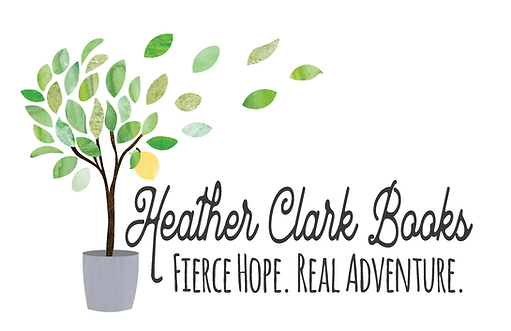Mechanics of Desire Part One of Three: How Martine Leavitt Changed My Life
- Heather Clark

- Jan 24, 2014
- 4 min read
Updated: Feb 10, 2022

The first time I tried to write a novel, it took me six years.
Inconsistency in writing habits meant the first draft took for years to complete. Even so, finishing felt amazing. I celebrated with my writing girls at Barnes and Noble over Italian cream sodas.
Then I had to revise. I knew the story didn’t entirely work, so I rewrote for a year. I had to fix the whole front end of the novel, which was all telling and very little showing. I wrote better lines, funnier scenes.
And in a year I had draft two.
And then my lovely, awful, wonderful, torturous friend, Nikki said these six words to me:
What does your main character want?
Crickets.
Tell me I’m not alone here.
What did my main character want? We went over some other paradigms. What was her arc?
What was the central question of the novel?
But it all came down to the fundamental problem in my novel.
I didn’t understand the mechanics of desire in story.
My main character didn’t have a solid goal. Her motivations were wishy washy.
A third rewrite got me most of the way there.
I wrote two more novels.
And I tried to make sure my characters wanted something. But you know, easier said than done.
People would read my writing and say, “I’m not sure why you included that. It doesn’t add to your story.”
Of course it adds to my story. It happens in my story. So there. Pbthpppp.
When I attended my first session of Writing and Illustrating for Young Readers this June, some simple, clear principles that I am now calling The Mechanics of Desire changed my life.
Martine Leavitt is one of my writing idols for many reasons, but most recently because she has altered my view of creating story forever. She showed a drawing of the classic story arc with climax and denouement and rising action, and then told us she didn’t care about that at all. She didn’t have any use for it.
Instead, she taught us the principles of storytelling as relate to the main character’s emotional and concrete desire lines, their controlling beliefs, their announced strategies, their obstacles, and their stakes. She encouraged us to never, ever write a story without knowing these things first. I have created a worksheet from all of her lectures on this subject, which I will share in a couple of weeks.
But for today, I’m going to start with breaking down my notes from the topic.
Today I’ll talk about emotional and concrete desire lines.
Some of this will be direct quotes from Martine, and some will be my interjections. I’m not sure which is which anymore. I just typed as fast as my fingers could move, anxious to soak up every bit of wisdom from this incredible lady.
In every story there are two threads. The emotional story and the concrete/physical story line. We need to know one or the other on page one. Chapter one for sure. The other can come along after that, but very quickly after that in Children’s fiction.
EMOTIONAL DESIRE LINE:
Must carry us all the way through the climax. What does your MC want most in the entire world?
We need a desire line in each story line–exactly what that character is all about.
What does she want? What does she need? for each character in each story.
Every character that you put in your book needs to want something. Every character has a story. Even if all they want is a glass of water. Why are they there? – DESIRE LINE.
Your characters need to be real people with real motivations.
In Lord of the Rings: Frodo wants safety and security. That is his emotional desire line.
CONCRETE DESIRE LINE:
Sometimes the concrete desire is revealed way before we know the motivation / emotional desire line. But the writer needs to know both, and reveal them as he/she goes along.
Frodo’s emotional desire line is safety and security. His concrete desire line, which must parallel the emotional desire line, is to save the shire. The shire represents that safety and security for Frodo.
CONCRETE DESIRE IS THE THING THAT MOVES THE CHARACTER AROUND MOST, TAKES THEM FROM BEGINNING TO END.
Both the emotional and concrete desire lines take us right to the climax. When you’re trying to figure out what this is, it’s the desire that doesn’t change for your character from the very beginning right to the climax. Both emotional and concrete desire lines will span almost the whole book.
In youth literature, the main character will typically have one or both desire lines fulfilled in the end.
If they get the emotional, and not the concrete, or the concrete, but not the emotional, we have a wistful, sad feeling ending, with just enough to satisfy us, and give us hope for our character.
If they get neither desire line, it is a tragedy.
Often they get both, and it is a happy ending.
In my current work in progress, the main character receives her emotional desire, but not her concrete desire. At the end of the story, she sacrifices her concrete desire line, because she can’t have both. It means that the ending is really emotional, and somewhat painful.
But satisfying, I hope!
I hope this was helpful. These principles are simple, but have helped me so much.
Read Part 2: CONTROLLING BELIEFS, AND ANNOUNCED STRATEGIES—two other principles that changed how I look at story, and made plotting SO much easier!
Read Part 3: OBSTACLES AND STAKES
Happy writing, all!





Comments